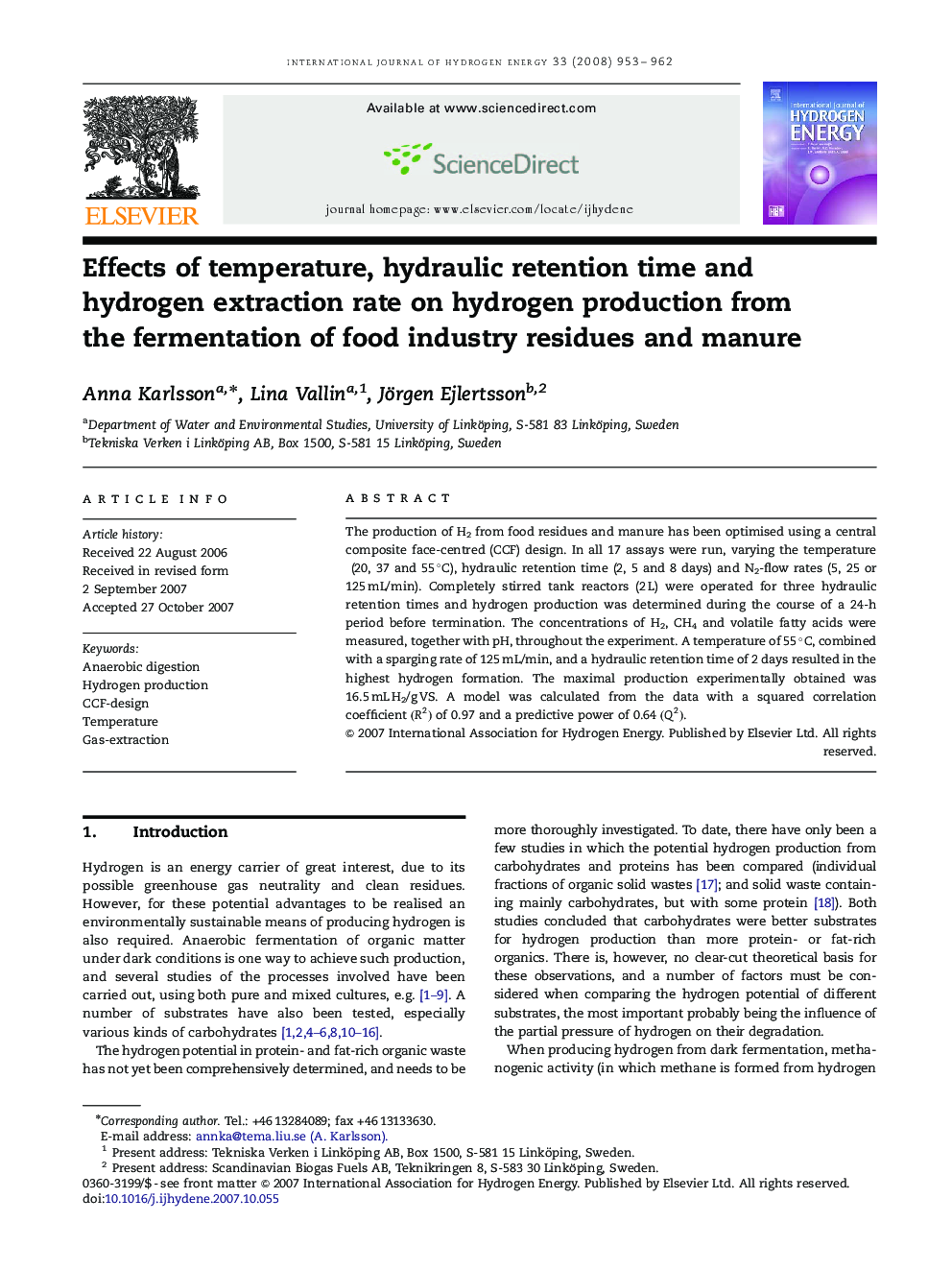| Article ID | Journal | Published Year | Pages | File Type |
|---|---|---|---|---|
| 1279239 | International Journal of Hydrogen Energy | 2008 | 10 Pages |
The production of H2 from food residues and manure has been optimised using a central composite face-centred (CCF) design. In all 17 assays were run, varying the temperature (20, 37 and 55∘C), hydraulic retention time (2, 5 and 8 days) and N2-flow rates (5, 25 or 125 mL/min). Completely stirred tank reactors (2 L) were operated for three hydraulic retention times and hydrogen production was determined during the course of a 24-h period before termination. The concentrations of H2, CH4 and volatile fatty acids were measured, together with pH, throughout the experiment. A temperature of 55∘C, combined with a sparging rate of 125 mL/min, and a hydraulic retention time of 2 days resulted in the highest hydrogen formation. The maximal production experimentally obtained was 16.5 mL H2/g VS. A model was calculated from the data with a squared correlation coefficient (R2)(R2) of 0.97 and a predictive power of 0.64 (Q2)(Q2).
